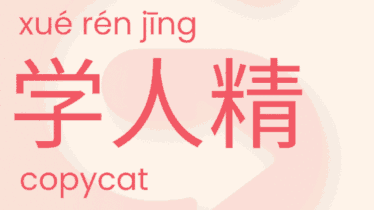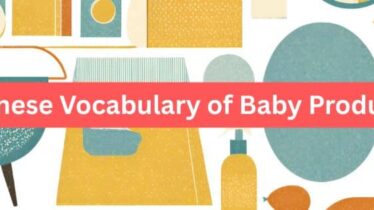Colors in Chinese: A Comprehensive Guide for Language Learners
Learning color words in Chinese is one of the first steps toward practical language skills. Whether you’re describing your favorite outfit, giving directions, or simply appreciating the world around you, understanding colors in Chinese (颜色 yánsè) opens up new dimensions in your language journey.
Basic Color Vocabulary in Chinese
In Mandarin Chinese, colors follow a straightforward pattern. Most basic colors consist of a single character, while more specific shades often add a modifier. Let’s start with the fundamental colors:
红 (hóng) – Red 橙 (chéng) – Orange 黄 (huáng) – Yellow 绿 (lǜ) – Green 蓝 (lán) – Blue 紫 (zǐ) – Purple 黑 (hēi) – Black 白 (bái) – White 灰 (huī) – Gray 棕 (zōng) – Brown 粉 (fěn) – Pink
When speaking about colors in Chinese, you’ll often add the word 色 (sè) after the color character to form the complete color term. For example, 红色 (hóng sè) means “red color” or simply “red.” However, in many contexts, just using the color character alone (红) is perfectly acceptable.
Cultural Significance of Colors in Chinese
Colors carry deep cultural meanings in Chinese society, often quite different from Western associations. Understanding these cultural connotations helps not just with vocabulary but with cultural fluency.
红 (hóng) – Red
Red holds unparalleled importance in Chinese culture. It symbolizes good fortune, joy, celebration, and vitality. This is why you’ll see red everywhere during Chinese New Year, at weddings, and other festive occasions. The phrase 红红火火 (hóng hóng huǒ huǒ) means “prosperous and thriving,” literally using the character for red twice.
During Chinese New Year, people give 红包 (hóng bāo) – red envelopes containing money as gifts. Wedding invitations are typically printed on red paper, and brides often wear red dresses called 旗袍 (qí páo).
黄 (huáng) – Yellow
Yellow was historically associated with imperial power. The ancient emperors wore yellow robes, and commoners were forbidden from wearing this color. The phrase 黄袍加身 (huáng páo jiā shēn) – “to be draped in the yellow robe” – means to become emperor.
In modern Chinese, yellow also represents wealth and prosperity, though in some contexts it can have associations with adult content (similar to “blue” movies in English).
白 (bái) – White
Unlike Western cultures where white symbolizes purity and is associated with weddings, in Chinese tradition, white is primarily associated with funerals and mourning. People wear white clothing to funerals, and the phrase 白事 (bái shì) – “white affair” – is a euphemism for funeral proceedings.
However, in modern China, Western influences have broadened the symbolism of white to include purity and cleanliness as well.
黑 (hēi) – Black
Black symbolizes darkness and sometimes bad luck in Chinese culture. The phrase 黑白不分 (hēi bái bù fēn) – “cannot distinguish between black and white” – means someone cannot tell right from wrong.
| Chinese Character | Pinyin | English | Cultural Notes & Usage |
|---|---|---|---|
| Basic Colors | |||
| 红色 | hóng sè | Red | Good fortune, celebration, used in 红包 (hóng bāo) – red envelopes for gifts |
| 橙色 | chéng sè | Orange | Named after the fruit, symbolizes enthusiasm and warmth |
| 黄色 | huáng sè | Yellow | Imperial power, wealth, the center in traditional Chinese cosmology |
| 绿色 | lǜ sè | Green | Growth, harmony, sometimes represents infidelity (戴绿帽子 dài lǜ mào zi – being cheated on) |
| 青色 | qīng sè | Blue-green/Cyan | Traditional color between blue and green, used in idiom 青出于蓝 (qīng chū yú lán) – pupil surpasses the master |
| 蓝色 | lán sè | Blue | Tranquility, associated with water and the heavens |
| 紫色 | zǐ sè | Purple | Nobility, spiritual awareness, historically reserved for royalty |
| 粉色 | fěn sè | Pink | Femininity, romance, literally means “powder color” |
| 棕色 | zōng sè | Brown | Earth, stability, associated with wood and natural materials |
| 灰色 | huī sè | Gray | Neutrality, used in 灰心 (huī xīn) – to be discouraged, lose heart |
| 白色 | bái sè | White | Traditionally associated with mourning, also purity in modern contexts |
| 黑色 | hēi sè | Black | Mystery, formality, also used in 黑白 (hēi bái) – right and wrong |
| 金色 | jīn sè | Gold | Wealth, prestige, related to metal in Five Elements theory |
| 银色 | yín sè | Silver | Elegance, modernity, also associated with the moon |
| Color Modifiers | |||
| 浅 + [color] | qiǎn | Light/pale | 浅蓝色 (qiǎn lán sè) – light blue |
| 深 + [color] | shēn | Deep/dark | 深红色 (shēn hóng sè) – dark red |
| 淡 + [color] | dàn | Light/diluted | 淡黄色 (dàn huáng sè) – pale yellow |
| 鲜 + [color] | xiān | Bright/vivid | 鲜绿色 (xiān lǜ sè) – bright green |
| 暗 + [color] | àn | Dark/dull | 暗红色 (àn hóng sè) – burgundy |
| Specialized Color Terms | |||
| 米色 | mǐ sè | Beige | Literally “rice color,” commonly used in fashion |
| 卡其色 | kǎ qí sè | Khaki | Transliteration from English, used for tan/light brown |
| 酒红色 | jiǔ hóng sè | Wine red | Deep, rich red like red wine |
| 玫瑰红 | méi guī hóng | Rose red | Named after rose flowers, a slightly pink-red |
| 天蓝色 | tiān lán sè | Sky blue | Literally “sky blue,” light bright blue |
| 湖蓝色 | hú lán sè | Lake blue | Aqua blue, between blue and turquoise |
| 柠檬黄 | níng méng huáng | Lemon yellow | Bright, slightly greenish yellow |
| 军绿色 | jūn lǜ sè | Military green | Olive green, used in military uniforms |
| 咖啡色 | kā fēi sè | Coffee color | Medium to dark brown, like coffee |
| 巧克力色 | qiǎo kè lì sè | Chocolate color | Rich, dark brown like chocolate |
| 香槟色 | xiāng bīn sè | Champagne | Light golden-beige, like champagne |
| 藏青色 | cáng qīng sè | Navy blue | Very dark blue, common in traditional clothing |
| 靛蓝色 | diàn lán sè | Indigo | Deep blue-purple, traditionally from indigo plant |
| 翡翠绿 | fěi cuì lǜ | Jade green | Named after jade stone, culturally significant |
| 珊瑚红 | shān hú hóng | Coral red | Pinkish-orange like coral reef |
| 梅红色 | méi hóng sè | Plum red | Purplish-red like plum blossoms |
| Color Patterns | |||
| 条纹 | tiáo wén | Striped | 蓝白条纹 (lán bái tiáo wén) – blue and white stripes |
| 格子 | gé zi | Checkered/plaid | 红格子 (hóng gé zi) – red checkered pattern |
| 波点 | bō diǎn | Polka dots | 黑白波点 (hēi bái bō diǎn) – black and white polka dots |
| 花 | huā | Flowery/multicolored | 花衬衫 (huā chèn shān) – floral/Hawaiian shirt |
| 迷彩 | mí cǎi | Camouflage | 迷彩裤 (mí cǎi kù) – camouflage pants |
| Common Color Phrases and Idioms | |||
| 五颜六色 | wǔ yán liù sè | Colorful/multicolored | Literally “five colors six colors,” describing something very colorful |
| 脸红耳赤 | liǎn hóng ěr chì | Blushing | Literally “red face, red ears,” to be embarrassed |
| 黑白分明 | hēi bái fēn míng | Clear distinction | Literally “black and white clearly distinguished,” clear right vs. wrong |
| 青出于蓝 | qīng chū yú lán | Surpass the teacher | Literally “blue comes from indigo but is bluer than indigo” |
| 红红火火 | hóng hóng huǒ huǒ | Prosperous | Literally “red red fire fire,” describing prosperity and success |
Color Modification in Chinese
Chinese has an elegant system for describing different shades and intensities of colors:
Light and Dark Shades
To describe a lighter shade, add 浅 (qiǎn) before the color: 浅蓝 (qiǎn lán) – Light blue
For darker shades, add 深 (shēn): 深绿 (shēn lǜ) – Dark green
Brightness and Intensity
To describe a bright or vivid color, add 鲜 (xiān): 鲜红 (xiān hóng) – Bright red
For a more subdued or pale color, add 淡 (dàn): 淡紫 (dàn zǐ) – Pale purple
Common Color Combinations and Patterns
Chinese has specific terms for color patterns and combinations that are quite useful in daily conversation:
花 (huā) – Flowery, multicolored 条纹 (tiáo wén) – Striped 格子 (gé zi) – Checkered 波点 (bō diǎn) – Polka dot
For example: 蓝白条纹 (lán bái tiáo wén) – Blue and white stripes 红格子 (hóng gé zi) – Red checks
Color Idioms in Chinese
Chinese has many colorful idioms (成语 chéngyǔ) that use colors to express deeper meanings:
五彩缤纷 (wǔ cǎi bīn fēn)
Literally “five colors, numerous and varied,” this describes something colorful and vibrant.
青出于蓝 (qīng chū yú lán)
Literally “blue comes from indigo,” this means the student surpasses the teacher. It comes from the process of making blue dye from the indigo plant.
脸红耳赤 (liǎn hóng ěr chì)
Literally “red face and ears,” this describes someone blushing from embarrassment.
黑白分明 (hēi bái fēn míng)
Literally “black and white clearly distinguished,” this means the difference between right and wrong is clear.
How to Use Colors in Sentences
Using colors in Chinese sentences follows straightforward patterns:
Describing Objects
To say an object is a certain color, use the pattern: [Object] + 是 + [Color] + 的 这本书是红色的。(Zhè běn shū shì hóng sè de.) – This book is red.
For a more casual description, you can use: [Color] + 的 + [Object] 红色的车 (hóng sè de chē) – A red car
Preference
To express your favorite color, use: 我最喜欢的颜色是 [Color]。 Wǒ zuì xǐ huān de yán sè shì lán sè. – My favorite color is blue.
Tips for Remembering Chinese Colors
Learning to recognize and use Chinese color vocabulary becomes much easier with a few memory strategies:
- Cultural associations – Remember that 红 (hóng/red) is for celebration and good fortune, which makes it prominent during Chinese New Year.
- Character composition – Many color characters contain clues about their meaning. For example, 蓝 (lán/blue) contains the water radical 氵on the left, connecting it to the sky and ocean.
- Everyday objects – Connect colors to common objects: 红 (hóng) like Chinese lanterns, 黄 (huáng) like golden imperial palaces.
- Practice with real items – Point to objects around you and name their colors in Chinese daily.
Modern Color Terms in Chinese
As China modernizes, new color terms have entered the language, particularly in fashion, design, and digital contexts:
卡其色 (kǎ qí sè) – Khaki 米色 (mǐ sè) – Beige (literally “rice color”) 香槟色 (xiāng bīn sè) – Champagne color 葡萄酒红 (pú táo jiǔ hóng) – Wine red 军绿色 (jūn lǜ sè) – Military green 天蓝色 (tiān lán sè) – Sky blue
These modern terms show how language evolves with cultural exchange and new needs for expression.
Practical Application: Shopping for Clothes in Chinese
When shopping for clothes in China, color vocabulary becomes immediately practical:
Sales assistant might ask: 您喜欢什么颜色的?(Nín xǐ huān shén me yán sè de?) – What color do you like?
You might respond: 我想要蓝色的,但是不要太深的蓝。(Wǒ xiǎng yào lán sè de, dàn shì bú yào tài shēn de lán.) – I want blue, but not too dark blue.
Or you could specify: 我喜欢淡紫色的那件。(Wǒ xǐ huān dàn zǐ sè de nà jiàn.) – I like that light purple one.
Experience the Joy of Learning Chinese with GoEast Mandarin
Ready to bring your Chinese language skills to life with personalized instruction? At GoEast Mandarin, we believe language learning should be engaging, practical, and culturally rich. Our professional teachers create customized learning experiences based on your goals and learning style. Whether you’re a complete beginner or looking to refine your conversational skills, we offer both online classes and in-person courses at our Shanghai campus. Sign up for a free trial class today and discover how our teaching approach can transform your Chinese language journey from memorizing vocabulary to truly communicating with confidence. Visit our website to schedule your complimentary session and take the first step toward Chinese language fluency!





